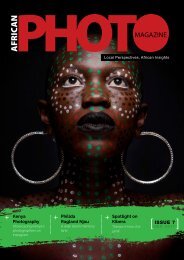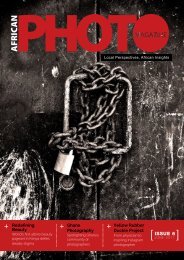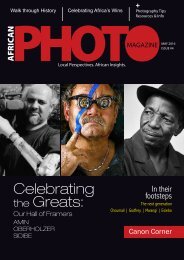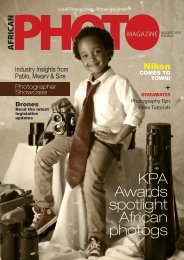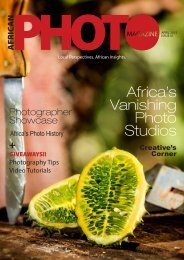African Photo Magazine Issue #8
We are particularly delighted to publish, in this issue, photographers showcasing studio photography talent that echoes the work of one of Africa’s greats, Malick Sidibé (1936–2016). Photographers Hassan Hajjaj, Omar Diop and Samuel Fosso have stayed true to the photographic style that made Mr Sidibé’s work legendary. The portraitures are uniquely stylish and follow signature themes that clearly identify each photographers artistic bent. The work of this trio speaks to the heart of this publication, the genesis of which was to not only celebrate contemporary African photography but to reach back and illuminate the artistry and creativity of our forefathers and those that came before us, and to never forget that we stand on the shoulders of giants.
We are particularly delighted to publish, in this issue, photographers showcasing studio photography talent that echoes the work of one of Africa’s greats, Malick Sidibé (1936–2016). Photographers Hassan Hajjaj, Omar Diop and Samuel Fosso have stayed true to the photographic style that made Mr Sidibé’s work legendary. The portraitures are uniquely stylish and follow signature themes that clearly identify each photographers artistic bent. The work of this trio speaks to the heart of this publication, the genesis of which was to not only celebrate contemporary African photography but to reach back and illuminate the artistry and creativity of our forefathers and those that came before us, and to never forget that we stand on the shoulders of giants.
You also want an ePaper? Increase the reach of your titles
YUMPU automatically turns print PDFs into web optimized ePapers that Google loves.
Hajjaj also looked at images from Cartier-Bresson to<br />
Robert Capra to David LaChapelle and Nick Night and<br />
Malick Sidibe in magazines.<br />
Hajjaj early work was all about Arab products, and when<br />
he started doing photography, he decided to bring that<br />
element into it. “These borders repeat and mimic the<br />
mosaic patterns of Morocco, and on top of that, it’s the<br />
strength of the brands—it’s easy for people to “read”<br />
so to speak, even though it’s from another culture. It’s<br />
an entry for people into a foreign culture. The graphic<br />
nature of these products and their recognizability makes<br />
them accessible for people not familiar with North Africa.<br />
Growing up I was really influenced by graffiti artists and<br />
graphic designers, so this was a way to bring something<br />
of my culture into my work that looks cool. They really<br />
capture people’s attention, and from there you can look<br />
more deeply and find other things in the work.”<br />
There is also definitely an element of collaboration. Most<br />
of my subjects are people I’ve known for a long time,<br />
and friends of friends. So that’s also how things started<br />
for me. I realized that I was surrounded by all these<br />
incredible, creative people who influenced me and<br />
supported me, so it’s also about trust and showcasing<br />
these “underdogs” that do something from the heat and<br />
have talent. It’s also about documenting these people<br />
from all over the world, trying to make images that<br />
document the present but could also be the future—<br />
there’s an aspect of storytelling.<br />
See more on IG: @hassanhajjaj_larache<br />
22 africanphotomagazine ISSUE 8 December 2018 23




